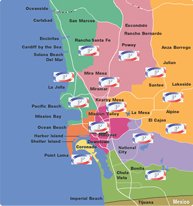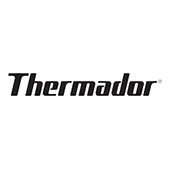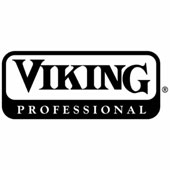Range/Oven Will Not Start
Repairing a range, stove or oven can seem like a big task, but our customers tell us how easy it is every single day. To help you diagnose the symptom of a range, stove or oven that will not start, we’ve created this guide of the parts most likely to fix the no heat problem. Use this information to understand how a range or oven works, how to determine which part is the cause and how to get the right part for your model. You can also get more details on your specific range, stove or oven by entering your model number into the search box.
If your oven has internal fuses, a wiring or component problem could have caused a fuse to blow. A blown fuse is an indication that a component has shorted or failed, and the problem will need to be corrected. Most ovens that use fuses will have an indication of the circuits that are affected by a particular fuse. If an oven fuse has blown, then you should inspect the oven element and the associated wiring to determine the cause before replacing the fuse. Do not change the rating of the fuses. The same will apply to a fuse labeled for a surface burner. Disconnect power from the range or oven before attempting service.
The BROIL ELEMENT is the heating element that is found at the top of the oven and produces a very high heat for broiling. If the broil element isn’t working, you should first do a visual inspection for signs that the element has blistered or separated. If the element appears normal then you can check for continuity with a multi-meter. Remove power from the appliance before performing this test. Remove the back panel and locate the terminals for the broil element and inspect the terminals and wires for signs of overheating or damage.
If there is no continuity then the element will need to be replaced. If the wires are damaged then they will need to be repaired. If the element is ok then you will need to check the broil circuit to determine the cause. This involves live voltage checks and should only be performed by qualified persons. Components to check include fuses, if the range is equipped, and oven control thermostat or electronic control.
The BAKE ELEMENT is the heating element that is found at the bottom of the oven. Most electric ovens use both the bake element and the broil element in a bake cycle, with the bake element performing 90% of the heating. If the bake element isn’t working, the oven may not heat. To help determine if the bake element is defective you should first do a visual check. If the element is blistered or separated then it should be replaced. If the element appears to look normal, then turn the oven on to a bake function for a minute and then turn it off.
Check the element for signs of heating and if it is still cold then it may be defective. Disconnect the power and then remove the back panel. First check the wires as they may have become loose or corroded. If the element appears to be fine visually, test it for continuity with a multi-meter. If the element is burned or no longer has continuity, it will need to be replaced. If the element is ok then you will need to check the bake circuit to determine the cause. This involves live voltage checks and should only be performed by qualified persons. Components to check include fuses, if the range is equipped, and oven control thermostat or electronic control.
SURFACE BURNERS are typically either a coil type, solid type or a ribbon coil as used in smooth top ranges. All of these consist of a heating wire that uses electric current to produce heat. Coil type elements can be checked for continuity by removing them from the terminal block and testing them with a multi-meter.
You should also inspect the terminal ends for signs of heat damage or corrosion, and if present, you should replace the terminal block or receptacle at the same time. You will need to remove power from the range to change the terminal block. Solid elements and smooth top elements require raising or removing the main top to gain access. You will need to remove power from the range before lifting the main top. Continuity can then be checked with a multi-meter, once you have removed the wires from the element terminals.
On modern electronic control ranges, the oven temperature sensor is the part that regulates the oven temperature. If it is not working properly it could be the reason why the range or oven won’t start. This part can be found inside the oven on the rear wall near the top. Most modern ovens will display a fault code if the oven sensor is at fault. If you think the sensor may be the issue you can check the resistance with a multi-meter but will need to know the correct resistance of the sensor at room temperature. Remove power from the appliance before performing this test.
The INFINITE SWITCH on the control panel controls the power to each surface element. If you have no heat at an element and the element and terminal block check ok, then you may have a defective infinite switch. Disconnect power to the range and remove the console back panel. Locate the switch and check for overheated wires or faulty terminals first. Test the switch’s contacts for continuity with a multi-meter. If defective, replace the switch. If the infinite switch does not appear to be defective, then you should check for proper voltage to the switch. This is a live high voltage test and should only be performed by qualified
persons.
Most modern ovens use an electronic control board to control the oven functions. These models will use the control board to operate the oven safety valve on a gas range or oven, and the bake and broil elements on an electric range or oven. If there is no power to the igniter circuit, or the element circuits, then you should check the control board to verify that there is power at the appropriate output relay. These are live voltage checks and should be performed by qualified persons only. If there is no output voltage then the control should be replaced.
The oven safety valve (also called the gas valve) is the part that ensures that gas is not released until the igniter has reached the correct temperature needed to ignite the gas. While this part can fail, it is uncommon. If the hot surface igniter does not glow you should first verify that you have voltage to the circuit. This is a live voltage check and should be performed by a qualified person. If voltage is lost at the valve terminals then you should verify the continuity of the bi-metal in the valve using a multi-meter.
The oven burner igniter commonly known as the hot surface igniter is used in modern gas oven burners to open the gas valve and to ignite the gas. As the igniter draws electric current it will heat to a high temperature and glow, as well as cause the bi-metal in the oven safety valve to warp and open the valve releasing the gas to be ignited. This sequence normally takes about a minute. Igniters come in both flat and round styles and are very fragile. If the burner does not light then you should check the igniter first. If the igniter does not glow at all, then check for power to the circuit. This is a live voltage check and should be performed by a qualified person. If power is present then the igniter may be open circuit and can be checked for continuity with a multi-meter. If the igniter is glowing, but the burner is not lighting, the igniter may be weak and still be at fault because it requires a certain amount of current draw to open the valve. This check requires the use of an amp meter and should be performed by a qualified person. If the igniter is defective then it must be replaced.
- APPLIANCE REPAIR BONITA, CA
- APPLIANCE REPAIR NATIONAL CITY, CA
- APPLIANCE REPAIR SPRING VALLEY, CA
- APPLIANCE REPAIR DEL MAR, CA
- APPLIANCE REPAIR EL CAJON, CA
- APPLIANCE REPAIR ENCINITAS, CA
- APPLIANCE REPAIR LA JOLLA, CA
- APPLIANCE REPAIR LAKESIDE, CA
- APPLIANCE REPAIR POWAY, CA
- APPLIANCE REPAIR RANCHO SANTA FE, CA
- APPLIANCE REPAIR SAN LUIS REY, CA
- SAN DIEGO APPLIANCE REPAIR
- APPLIANCE REPAIR SANTEE,CA
- APPLIANCE REPAIR SOLANA BEACH, CA
- APPLIANCE REPAIR HILLCREST, CA
- APPLIANCE REPAIR POINT LOMA, CA
- APPLIANCE REPAIR OCEAN BEACH, CA
- APPLIANCE REPAIR MISSION VALLEY, CA
- APPLIANCE REPAIR PACIFIC BEACH, CA
- APPLIANCE REPAIR BAY PARK, CA
- APPLIANCE REPAIR LINDA VISTA, CA
- APPLIANCE REPAIR LOGAN HEIGHTS, CA
- APPLIANCE REPAIR NORTH PARK, CA
- APPLIANCE REPAIR SAN DIEGO
- APPLIANCE REPAIR NORMAL HEIGHTS, CA
- APPLIANCE REPAIR CLAIREMONT MESA, CA
- APPLIANCE REPAIR CARLSBAD, CA
- APPLIANCE REPAIR CORONADO, CA
- APPLIANCE REPAIR DEL CERRO, CA
- APPLIANCE REPAIR SORRENTO VALLEY, CA
- APPLIANCE REPAIR UNIVERSITY CITY, CA
- APPLIANCE REPAIR KEARNEY MESA, CA
- APPLIANCE REPAIR TIERRASANTA, CA
- APPLIANCE REPAIR MIRA MESA, CA
- APPLIANCE REPAIR RANCHO BERNARDO, CA
- APPLIANCE REPAIR RANCHO PENASQUITOS, CA

7919 Silverton Ave, San Diego, CA 92126





















